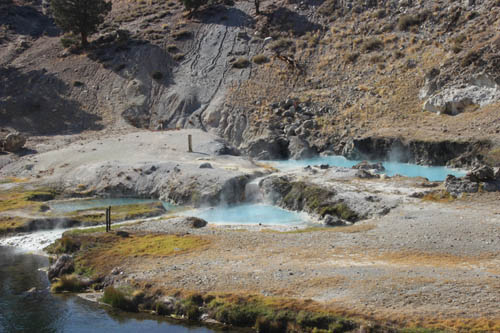
Driving south on US 395 past Lee Vining, turn left on Hot Creek Hatchery Road. You’re going to make a pretty long, and pretty slow, drive east before you come to the overlook and parking lot of the hot springs themselves.
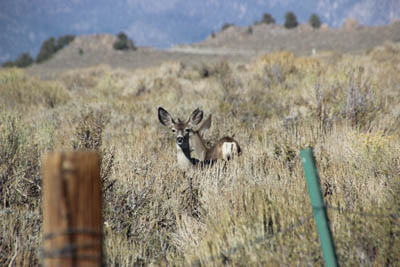
If you like volcanoes and geological activity, this is worth your time. If you just like the beautiful and strange, it’s worth your time too. Hot Creek starts as Mammoth Creek, and flows out of the mountains, carrying mostly cold water from snowmelt. At this location, a series of natural tunnels lead down to a magma chamber three miles down. The water passes over the top of it, heats up and “percolates” up into the stream. In addition to the hot, heavily mineralized blue pools, Hot Creek displays geysers and fumaroles regularly.
The water is scalding, and it should be a no-brainer that swimming and wading is not a good idea, but there are still fences and signs everywhere. Fly fishing is another matter entirely, and encouraged.
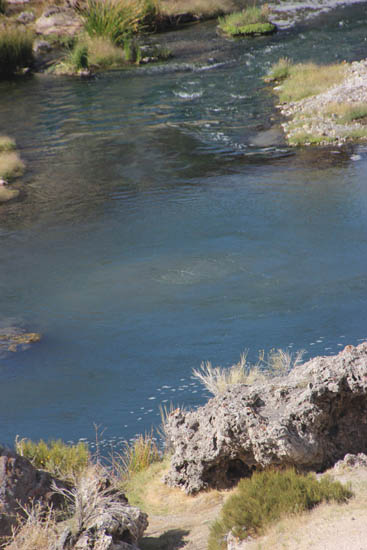
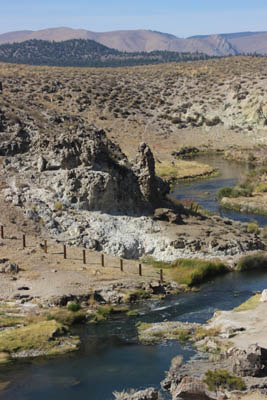
From the parking lot, there is a steep, worn trail that leads you down closer to the stream. It’s about 2/10 of a mile, partially paved. Over the years the pavement has worn away and the bottom half of the trail is mostly dirt. 2/10 of a mile is nothing, and this wasn’t terribly steep, really, but at 8500 feet, this was the one place I had the most dramatic reaction to altitude. On my way back up, I was laboring for breath, panting, nearly wheezing, and my brain was yelling at me that I wasn’t getting enough oxygen. (By the way, that wasn’t true. I was getting enough oxygen–I just wasn’t getting as much as I was used to.)
I stopped at the one switchback to catch my breath, but it wasn’t helping at first, and I thought, “Is this what having Covid feels like?” After a couple of minutes, and a picture of a lizard, my lungs stopped clamoring and I slowly made my way up the rest of the trail. I was panting like a marathoner again by the time I reached the top, though.
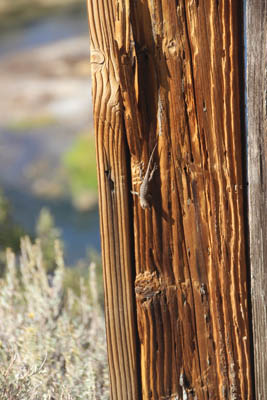
(In Iceland, we toured an energy plant that used “volcanic fluid” as a heating source, refining it to mostly water and using it as radiant heat in nearby Reykjavik. To my knowledge, the USA doesn’t utilize volcano power this way.)
Whether you like scenery, volcanoes, or geology, Hot Creek is worth the drive.
